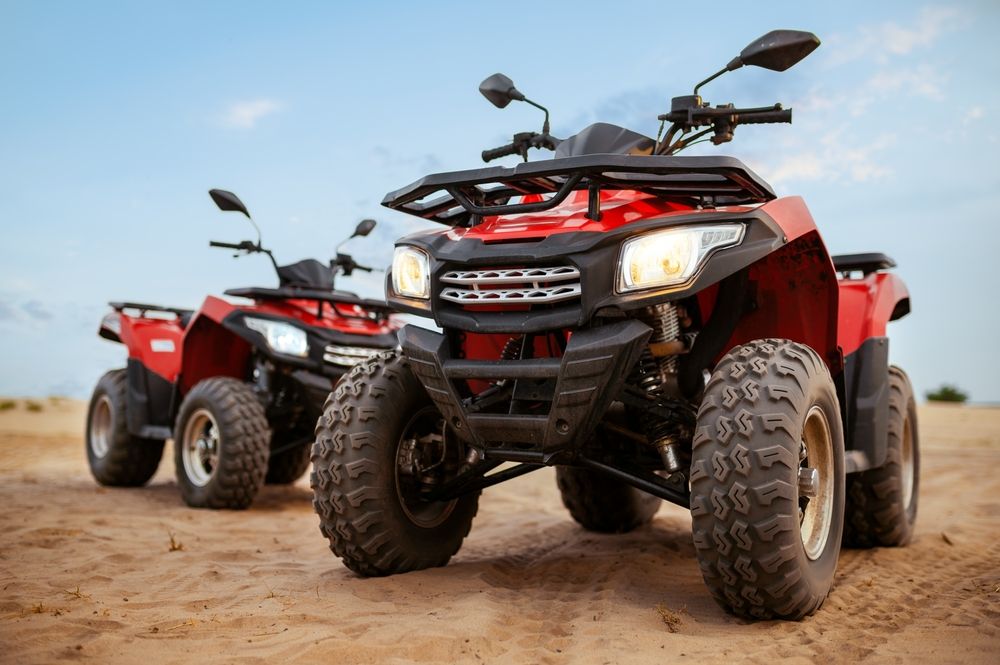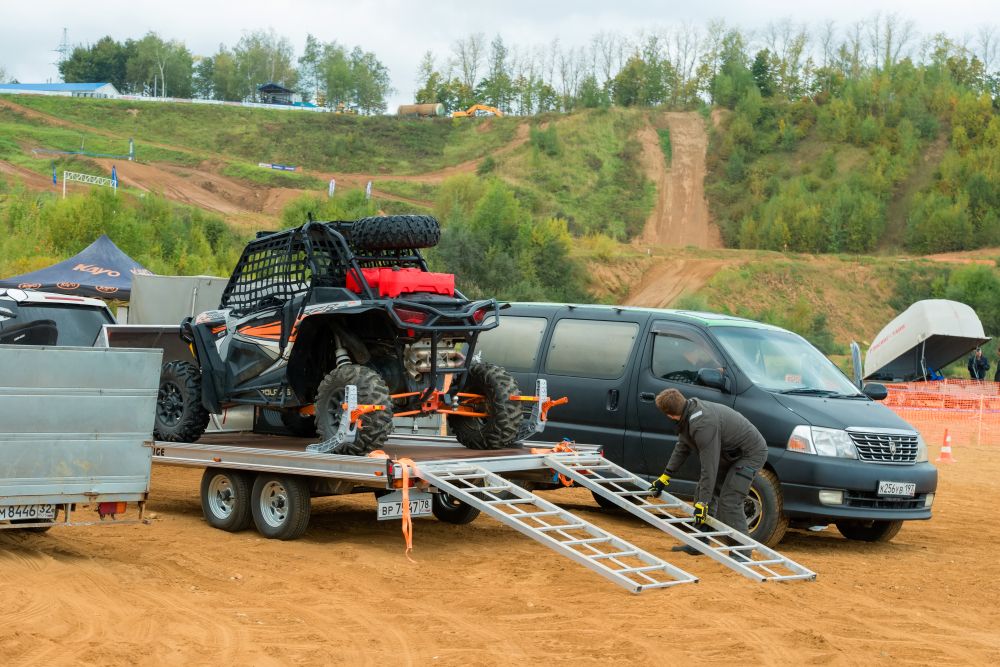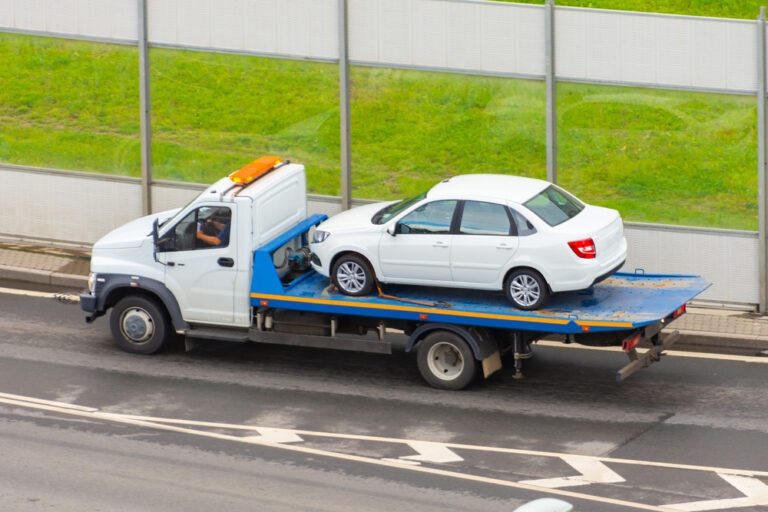
How to Ship an ATV: A Comprehensive Guide
All-Terrain Vehicles (ATVs) are popular recreational and utility vehicles known for their versatility, adaptability and, let’s be honest: fun! Whether you’re selling your ATV, moving to a new location, or sending one as a gift, ensuring the vehicle reaches its destination safely and cost-effectively is paramount. We have written this helpful, comprehensive guide to help you ship your ATV successfully!
Prepare your ATV For Shipment
Just as you will pack a suitcase, tidy your home, and print your documents before a trip, your ATV can do some preparation for its journey, too.
Start by documenting everything. Have a photoshoot as the importance of visual documentation cannot be overstated. These photos provide a tangible timestamped record of the ATV’s condition before shipping. Be sure to do the following:
- Multiple Angles: Take pictures from the front, rear, sides, and top. This ensures a full 360-degree view.
- Details: Focus on any pre-existing scratches, dents, or marks. This can be crucial if a dispute arises regarding new damages.
- High Resolution: Ensure the photos are clear and of high quality. This helps in the accurate depiction of the ATV’s condition.
- Storage: Save the photos both on cloud storage and an external drive. This guarantees they’re accessible whenever needed.
A thorough paper trail is essential for numerous reasons, from legal requirements to personal assurance. When shipping an ATV, you must prepare the following information to share with us at ShipLux.
- Title: This proves the ownership of the ATV. If you’re selling the vehicle, the new owner will need this.
- Registration: Current registration demonstrates that the ATV is legally permitted to operate. It can also serve as proof of address.
- Service Records: If available, service or maintenance records provide a history of the ATV’s upkeep and any repairs.
- Customs or Import Documentation: For international shipping, there might be specific documents required by the destination country.
A neat and clean ATV is not just about aesthetics and looking good, it has functional and regulatory advantages, including:
- Inspection: Cleanliness ensures that any damage or issues are easily visible both before and after shipping.
- Avoid Additional Fees: Some shippers might charge extra for cleaning, especially if dirt poses a risk to other cargo or violates import regulations.
- Pests & Seeds: Mud can carry seeds or pests. By cleaning, you reduce the risk of transporting invasive species, which is especially crucial for international shipments.
Loose components or accessories are prone to damage during the shipment, or getting misplaced.
- Visual Inspection: Walk around the ATV and physically check for any loose elements. Use appropriate tools to tighten loose screws or bolts.
- Accessories: Items like helmets, gloves, or custom equipment should be removed and packed separately. If you’re including them in the shipment, list them explicitly in the inventory.
- Mark Removed Parts: If you’ve taken off any parts, label them and document where they came from. This makes reassembly easier upon arrival.
Safety is paramount, and liquid fuel in your ATV presents various risks during transit. To avoid any problems, be sure to:
- Keep less Than a Quarter: While you don’t need to empty the gas tank, it should contain only a minimal amount of fuel. This reduces the risk of spillage or fire.
- Battery: Disconnecting the battery prevents any unintentional electrical activity, further ensuring safety.
By meticulously preparing your ATV for shipment, you’re ensuring its safety and increasing the likelihood of a hassle-free transit experience. After making your book with us, we will provide you with any additional necessary information to help you prepare as best as possible, based strictly on your needs.
Select Your ATV’s Shipment Method

When shipping an ATV, choosing the correct method is pivotal. It affects the safety, cost, and convenience of the entire process.
Enclosed vs. Open Transport
Enclosed Transport offers a more premium level of protection for your ATV, shielded from every element, including rain, snow, dust, and sun, ensuring that it remains in the same condition throughout the transit. Enclosed spaces offer better protection against theft or vandalism. They’re often locked and harder for unauthorized individuals to access.
All these goodies, however, come at a price. Enclosed transport typically costs more than open transport. If your ATV is a rare model, customized, or holds sentimental value, this might be the best choice regardless of the price difference.
Open Transport is the most common way to ship vehicles, including ATVs. Since it’s a 100% open carrier, your ATV will be exposed to the weather and road conditions. This means potential rain, mud splashes, or dust. Open transport is typically more affordable than enclosed transport due to the higher number of vehicles that can be transported at once and the reduced weight of the trailer. With more availability and options, open carriers might offer faster shipping times.
Both are excellent choices, but they are personal. It comes down to several factors! If you don’t mind a quick wash of your ATV and want to save money, opt for open. If you are super concerned about the safety and integrity, opt for enclosed.
Door-to-Door vs. Terminal-to-Terminal
Door-to-Door is something we are always excited to offer our customers, since it’s luxuriously convenient! After confirming your shipment details, your ATV will be easily whisked away from your specified location and delivered right to your desired destination.
This is a huge time saver! It means you do not need to drive to a terminal, which is especially helpful if the nearest one is far from your location.
Alternatively, if there is a terminal near your home, there is the option to go for Terminal-to-Terminal shipment, which gives the customer a more hands-on approach to their shipment service. It’s not as convenient, as you are responsible for getting your ATV to the shipping terminal and retrieving it upon arrival.
However, since the shipping company doesn’t have to detour to individual locations, the cost is typically lower than door-to-door. If you can’t pick up your ATV immediately, some terminals offer storage facilities, although this might come at an additional cost. Depending on your schedule, you can choose when to drop off or pick up the ATV, within the terminal’s operating hours.
International Shipping Considerations
Shipping your ATV across borders presents unique challenges, with the first being import regulations. Before shipping, ensure the destination country permits ATVs. Some countries might have restrictions based on vehicle specifications, age, or emissions.
- Duties and Taxes: Almost every country imposes duties and taxes on imports. It’s vital to understand these charges upfront to avoid unexpected costs.
- Quarantine and Cleaning: Countries protect their ecosystems fiercely. To prevent the introduction of foreign pests or diseases, they may have strict cleaning and quarantine requirements. Ensure your ATV meets these criteria before shipping to avoid delays or additional charges.
- Documentation: International shipping requires extensive paperwork, from bills of lading to customs declarations. Ensure you have all the necessary documents to facilitate a smooth shipping process.
Remember, while cost is a significant factor in choosing a shipping method, it shouldn’t be the only one. Prioritize your ATV’s safety, your convenience, and the reliability of the shipping company.
Communication
Effective communication is at the heart of any successful transaction, especially when shipping valuable items like ATVs. Ensuring clarity and understanding between you and the shipping company can mitigate potential mishaps, misunderstandings, or delays.
Pre-shipment Communication
Before your ATV is even on the move, there’s essential groundwork to cover:
- Detailed Quotation: Ensure that the shipping company provides a detailed quote, specifying costs, dates, insurance coverage, and any additional services or fees. This helps prevent unexpected charges. If you opt to work with us at ShipLux, our quote takes around 5 minutes to complete and asks a slew of questions to better understand your needs. Then, voila! A personalized quote will come your way, highlighting the costs, without any nasty hidden fees—that’s our promise to you!
- Contact Details: Confirm that you have the correct contact details for the shipping company and the driver, if applicable. Equally, provide them with your up-to-date contact information, including an alternative or emergency contact
- Special Instructions: If your ATV has any peculiarities or if you have specific instructions about handling or the drop-off location, communicate them upfront.
Tracking and Updates
Once your ATV is en route, staying informed is crucial. Many shipping companies (including us!) offer tracking systems that let you monitor the progress of your shipment in real-time. If available, ensure you have access to this system and understand how it works.
Even if a tracking system is available, regular updates via phone, SMS, or email can be comforting. Determine the frequency of these updates with the company. At ShipLux, we work with a variety of mediums, so we are available to chat and update via the method you prefer, ie: facebook messenger, whatsapp and more!
Sometimes, unavoidable delays occur due to weather conditions, technical issues, or other unforeseen circumstances. The company should promptly communicate these to you, explaining the cause and giving a new estimated delivery time.
Delivery Communication
As the delivery date approaches, final communication details become vital.
A reminder or notice 48 hours before the scheduled delivery allows you to ensure you (or a trusted individual) are available to receive the ATV. On the delivery day, periodic updates regarding the shipment’s location and estimated time of arrival can be very helpful.
Reception and Post-delivery
Once your ATV arrives, ensure you or the appointed individual thoroughly inspects the ATV upon arrival, checking for any damages or discrepancies. Check all areas, and compare against photos if you have any concerns.
After delivery, the shipping company might request feedback or a review. This is your opportunity to commend excellent service or point out areas of improvement.
Understand what documents need to be signed upon delivery. Typically, this includes a Bill of Lading (BOL), which should be cross-checked with the original copy provided during pick-up. Any damages or inconsistencies should be noted before signing.
Clear, open, and proactive communication builds trust between you and the shipping company. Not only does it ensure the safe transit of your ATV, but it also provides peace of mind, knowing that your prized possession is in good hands and that you’re kept in the loop every step of the way.
Breaking Down The Costs

At this point, you might be thinking, so… what is this going to cost me?
When it comes to shipping, especially valuable items like ATVs, understanding the cost components can be crucial. Knowing what you’re paying for and why can help you make informed decisions, budget effectively, and possibly even find areas where you can save.
Let’s dive deeper into the elements influencing shipping costs:
Distance
The distance between the pick-up and drop-off locations is a primary determinant of shipping costs. The longer the distance, the higher the fuel consumption. With fluctuating fuel prices, this can significantly influence the cost.
Plus, longer distances mean longer hours for drivers, which can result in higher wages or even the need for multiple drivers for especially long hauls.
Weight and Dimensions
The size and weight of your ATV can affect the shipping method and the space it occupies.
For example, larger ATVs take up more space on a trailer, reducing the number of other vehicles or items that can be shipped simultaneously. Especially large or heavy ATVs might require special equipment for loading and unloading, adding to the cost.
Depending on its size, an ATV might not fit into standard shipping methods, necessitating a more specialized and possibly pricier solution.
Season
Just as with other forms of transport, ATV shipping can see seasonal fluctuations in prices.
Peak seasons, like summer and early fall, might see a surge in ATV shipping requests. With that, high demand can lead to increased prices.
Some seasons, especially winter, come with challenging weather conditions. Shipping during these times might incur additional costs due to slower transit times and increased risks.
Additional Services
Optional services can offer added convenience or security but come with added costs.
- Door-to-Door Service: As previously discussed, this offers unparalleled convenience but usually comes at a premium compared to terminal-to-terminal shipping.
- Expedited Shipping: If you need your ATV delivered by a specific date, expedited shipping can ensure it, but this speed can significantly elevate the cost. Expedited shipping is something that we offer, but it must be organized in advance.
- Insurance Coverage: Basic shipping often comes with a standard insurance policy, covering up to a certain value. If your ATV is especially valuable, you might opt for additional coverage, which will increase the shipping price.
Understanding the cost structure helps you navigate the often complex world of shipping. With a clear breakdown, you can ask the right questions, and ensure that you’re getting value for your money. Always request detailed quotes from shipping companies and ensure that there are no hidden fees or charges.
Paperwork and Regulations
Shipping an ATV, especially internationally, is more than just packaging and transportation. The legalities and paperwork involved can be as crucial as the physical shipment.
Navigating through the bureaucratic maze can be challenging, but understanding the key elements will ensure a smoother process. Most shipping companies, including ShipLux, will support their customers by guiding them and offering advice, however, it is down to the client to arrange for the paperwork as it is their responsibility.
For international shipments, customs declaration is mandatory. It informs the customs officials about the contents of your shipment. Clearly state that you’re shipping an ATV, including its make, model, and year. This helps in assessing the applicable duties or taxes. You should always declare the ATV’s value, as this is crucial for determining customs duties and should match with the invoice or purchase documents. Don’t forget to specify whether the ATV is being shipped for personal use, sale, or as a gift.
Bill of Lading (BOL)
This is a vital document used in almost all freight shipping.
- Proof of Contract: The BOL acts as evidence of a contract between the shipper and the carrier. It lists the type of goods, quantity, and destination.
- Receipt: Once the shipment is delivered, the BOL also serves as a receipt. Ensure you keep a copy for your records.
Specific Permits
Some countries or states may require special permits for the import or transport of ATVs.
- Import License: Depending on the destination, you might need a permit or license to import an ATV. This is especially true if ATVs are classified under restricted or controlled goods.
- Environmental and Safety Standards: Some regions may have specific environmental or safety standards that your ATV needs to meet. Familiarize yourself with these standards and obtain the necessary certifications or modifications.
State or Country-Specific Regulations
Different states and countries have unique regulations concerning ATV import and use.
- Emission Standards: Some regions have strict emission standards, and your ATV might need modifications or certifications to meet these standards.
- Age Restrictions: Some countries have age restrictions on imported vehicles, including ATVs. Ensure your ATV meets the age criteria for the destination region.
- Taxes and Duties: Almost all international shipments are subject to taxes and duties. Understand the rates applicable to your ATV to avoid any surprises.
Understanding and properly handling paperwork and regulations are as critical as the physical preparation of your ATV for shipment. Overlooking or misunderstanding a single document can result in delays, fines, or even the return of your shipment. Always double-check with shipping experts or customs brokers, especially when shipping internationally, to ensure you’re in full compliance.
Conclusion
Shipping an ATV requires careful planning and consideration. With the right preparation and a trusted shipping partner, your ATV can be transported safely and efficiently to its destination. Always prioritize safety, invest in insurance, and stay informed throughout the process. Safe shipping!
Recent post

General Shipping Information
Debunking Common Vehicle Transport ...

Car Shipping